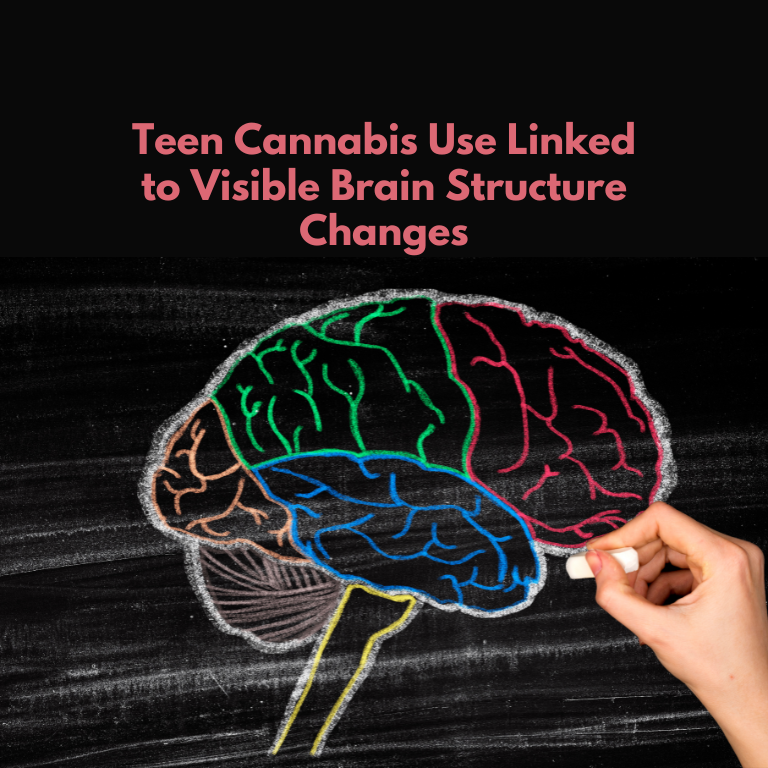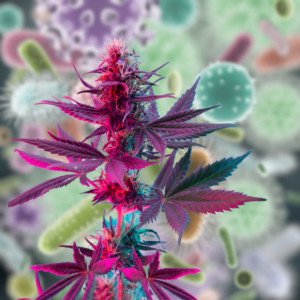Teen Cannabis Use Linked to Visible Brain Structure Changes

Cannabis Use in Adolescents Linked to Cerebral Cortex Thinning, New Study Shows
October 27, 2024 – A recent study, led by Graciela Pineyro and Tomas Paus, professors at the Université de Montréal and researchers at CHU Sainte-Justine, has raised new concerns about adolescent cannabis use. Published in The Journal of Neuroscience, the study demonstrates that exposure to THC—tetrahydrocannabinol, the main psychoactive compound in cannabis—may lead to thinning of the cerebral cortex in young users. These findings contribute to a growing body of evidence linking early cannabis use to potential cognitive and developmental impairments during adolescence, a critical period for brain development.
Impact of THC on the Adolescent Brain
The study, a collaboration between Pineyro and Paus’s research teams, reveals that THC exposure causes a reduction in the dendritic arborization of neurons in adolescent brains. The dendritic arborization is a network of neuron “antennae” responsible for receiving and processing information, and it is crucial for the efficient communication between neurons. When this network is compromised, the brain’s ability to process information and adapt to new challenges may be significantly affected.
Professor Paus likens this effect to a computer losing data input capacity. “If we take the analogy of the brain as a computer, the neurons would be the central processor, receiving all information via the synapses through the dendritic network,” explains Paus, who is also a professor of psychiatry and neuroscience. “So a decrease in the data input to the central processor by dendrites makes it harder for the brain to learn new things, interact with people, cope with new situations, etc. In other words, it makes the brain more vulnerable to everything that can happen in a young person’s life.”
Methodology: A Multi-Level Research Approach
The strength of the study lies in its comprehensive, multi-method research approach. By using a combination of human MRI imaging data and animal models, the researchers were able to study the effects of THC on the adolescent brain at various levels, providing a clearer picture of how cannabis might impact neural structures over time.
Paus and his team first analyzed MRI scans of teenagers’ brains to identify potential structural differences between those who used cannabis before the age of 16 and those who did not. The imaging data showed that young cannabis users had a thinner cerebral cortex, particularly in areas of the brain responsible for cognitive functions and emotional regulation.
However, as Paus explains, MRI scans alone do not establish causation. “Analyzing magnetic resonance imaging (MRI) scans of a cohort of teenagers, we had already shown that young people who used cannabis before the age of 16 had a thinner cerebral cortex,” Paus says. “However, this research method doesn’t allow us to draw any conclusions about causality, or to really understand THC’s effect on the brain cells.”
To address this limitation, the researchers incorporated a mouse model to observe THC’s direct impact on brain cells. By exposing mice to THC and subsequently analyzing brain tissue at the cellular level, Pineyro’s team observed that THC modified the expression of certain genes associated with the structure and function of synapses and dendrites.
“The model made it possible to demonstrate that THC modifies the expression of certain genes affecting the structure and function of synapses and dendrites,” explains Pineyro, a professor in the Department of Pharmacology and Physiology at Université de Montréal. “The result is atrophy of the dendritic arborescence that could contribute to the thinning observed in certain regions of the cortex.”
Genetic Links Between Animal and Human Models
One of the most compelling aspects of this research is the genetic connection identified between the mouse model and human adolescents. The genes modified by THC exposure in the mice were also found in the thinner cortical regions of the human cohort who had experimented with cannabis. This correlation allowed the researchers to confirm, with a high level of confidence, that THC-induced gene alterations in the mice were likely contributing to cortical thinning in young humans as well.
Through this cross-species comparison, the research team was able to draw stronger conclusions about the role of THC in adolescent brain development. By understanding how cannabis affects the brain at both the molecular and structural levels, researchers are now better equipped to assess the full range of THC’s impact on cognitive health.
Rising THC Concentrations and the Need for Public Awareness
The study’s findings come at a time when adolescent cannabis use is increasing across North America, and commercial cannabis products are more potent than ever before. With THC concentrations steadily rising in many products available in dispensaries, the potential risks to developing brains may be higher than in previous generations.
The study’s findings underscore the importance of public health initiatives aimed at informing young people about the potential long-term effects of cannabis use on cognitive health and brain development. “With cannabis use on the rise among North American youth, and commercial cannabis products containing increasing concentrations of THC, it’s imperative that we improve our understanding of how this substance affects brain maturation and cognition,” Pineyro stated.
Implications for Public Health and Future Research
The collaborative research effort, which combined cutting-edge techniques in cellular biology, imaging, and bioinformatics, offers a new foundation for developing effective public health policies targeting adolescent cannabis use. The potential impact on cognitive health has broader implications for educational, social, and mental health outcomes in adolescents, who may face increased risks for learning difficulties, emotional regulation challenges, and mental health issues related to early cannabis use.
The study also points to the need for ongoing research to explore the long-term consequences of adolescent cannabis use. As Pineyro and Paus’s research indicates, further investigation into the effects of various levels of THC exposure and the long-term outcomes on cognition and behavior is essential. Researchers believe that understanding THC’s specific impacts on gene expression and neural connectivity will aid in the creation of informed guidelines for safe cannabis use, particularly among young people.
Moving Forward: Towards a Balanced Public Health Approach
While the legalization of cannabis across many states and countries has increased accessibility, studies like this highlight the need for balanced regulations that consider both access and safety, especially for adolescents. Cannabis is widely perceived as less harmful than other substances, but its potential effects on brain development require consideration in educational and health messaging aimed at young people.
Some experts suggest implementing age restrictions, limits on THC concentrations in products available to young adults, and educational campaigns to raise awareness about the risks associated with early cannabis use. By adopting a public health approach focused on prevention and education, policymakers may better safeguard adolescent cognitive health as access to cannabis continues to grow.
A Call for Awareness Among Parents, Educators, and Healthcare Providers
The study emphasizes the critical role of parents, educators, and healthcare providers in fostering a more informed conversation about adolescent cannabis use. By understanding the potential impacts of THC on the developing brain, adults can better support adolescents in making safe and informed decisions regarding substance use.
Paus and Pineyro’s study contributes valuable insights to the scientific community and offers a framework for developing public health measures that address the unique challenges posed by cannabis in adolescent health. As the cannabis landscape continues to evolve, collaborative efforts in research and policy will be essential to ensuring that young people receive the guidance they need to protect their cognitive development.











